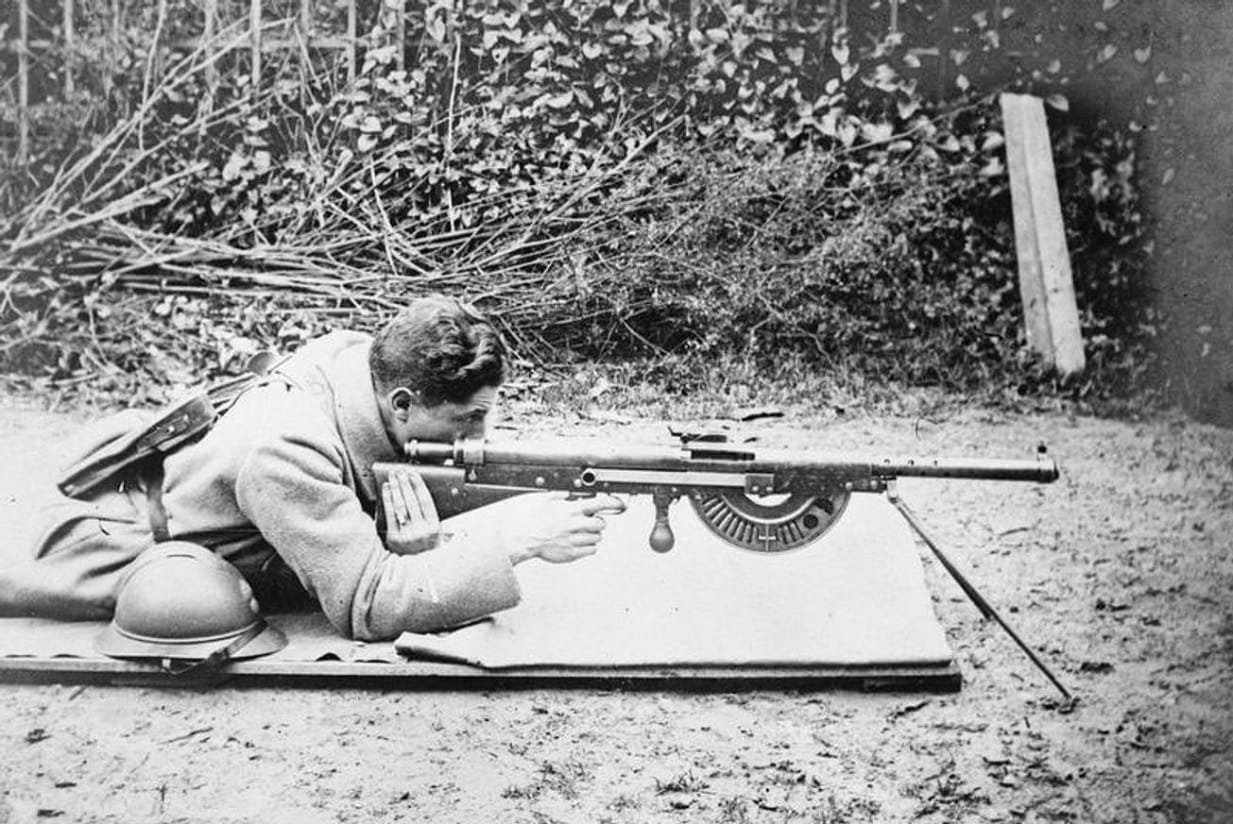Summary and Key Points: The Chauchat machine gun, widely recognized as one of history’s worst automatic weapons, plagued soldiers during World War I. Developed hastily by France for mobile warfare, the Chauchat’s open-sided magazine was prone to jamming due to dirt and debris.
-American troops, issued a poorly adapted version, particularly despised the weapon for its constant unreliability and awkward ergonomics. Although innovative in concept—lightweight and portable—it ultimately failed in execution, overshadowed by superior guns like the Lewis Gun and Browning Automatic Rifle.
-Its legacy remains a stark example of how rushed design and poor implementation can doom even promising military technologies.
Chauchat: The Worst Machine Gun Ever? Its Reputation Is Well-Deserved
When researching the best machine guns (or any item) in the world, there will always be debate as countless people will argue the weapon’s merits.
But the dubious title has nearly universal agreement when it comes to the worst machine gun in history.
The French Chauchat, officially known as Le Fusil Mitrailleur 1915 CSRG, was a fully automatic weapon that weighed 20 pounds loaded, fired standard French army rifle ammunition, and came equipped with a 20-round magazine.
It represented a considerable leap in firepower over the standard French infantry rifle of the time, a bolt-action rifle designed in 1886 that held only eight rounds.
The weapon was pronounced “sho-sho” by American doughboys who came to France in 1917 and were issued it since they were short of machine guns.
World War I Saw The Rise of the Machine Gun
World War I saw all combatants’ first widespread use of machine guns. Most were air- or water-cooled weapons, heavy and cumbersome, mounted via tripods. The trench-style warfare common to the war showed a need for lighter, more maneuverable guns capable of being operated by a crew of two or three soldiers.
The French concept (and a good one) was to produce a light machine gun for use while attacking. This new firearm allowed the infantry to bring heavier firepower while on the move, clear out enemy positions, and repel enemy counterattacks until the heavy machine guns were brought up.
At the start of World War I, France did not have a single light machine gun in its inventory, so it set out to acquire one. The result was the Chauchat.
The Chauchat looked like it was produced from bicycle parts, and it was. The Gladiator Company produced the Chaucat, which made French bicycles, motorcycles, and cars before the war.
Chauchat: Unreliable, Ergonomically Poorly Designed “Garbage”
The weapon was unreliable, and the hastily designed 30.06 model produced for the American troops was the worst yet. There was an excellent scene early in the History Channel’s World War I film, “The Lost Battalion,” where American troops are arriving at the front, two American veterans are discussing the Chauchat, and the troops hear the weapon referred to as “a piece of garbage.”
The idea was good; the Chauchat was a true light machine gun carried by one French “poilu” or infantryman. It weighed 20 pounds and allowed the troops to fire and maneuver. The gunner had selective fire, allowing semiautomatic or fully automatic.
However, the idea behind the open magazines, which allowed the gunner to see how many rounds were left, also allowed dirt and debris into the magazine, causing numerous jams.
American Troops Resented Being Issued A Foreign Weapon
When the doughboys arrived in France, they were issued the Chauchat, much to their consternation. There were two weapons that they favored. US Army Colonel Isaac Newton Lewis designed the Lewis Gun.
He had profound differences with General William Crozier, chief of the Ordnance Department. After being frustrated that he was “slapped by rejections from ignorant hacks,” Colonel Lewis resigned his commission and took his design to Europe. The British adopted the Lewis Gun, which was widely employed successfully.
The United States Marine Corps that headed to the Argonne Forest had to turn in their Lewis Guns—the weapon they had been trained on—in favor of the French weapon.
The Browning Automatic Rifle (BAR) came about in the war’s closing months and was also held back in favor of the Chauchat. The BAR would later serve in World War II and Korea, earning high marks from its gunners.
One of the most common complaints about the weapon was “the slap” if it was held improperly. The gun would punch the soldier in the eye or cheek.
It was a poorly designed weapon with some good points, but the bad outweighed the good.
About the Author: Steve Balestrieri
Steve Balestrieri is a 19FortyFive National Security Columnist. He served as a US Army Special Forces NCO and Warrant Officer. In addition to writing for 19FortyFive, he covers the NFL for PatsFans.com and is a member of the Pro Football Writers of America (PFWA). His work was regularly featured in many military publications.

